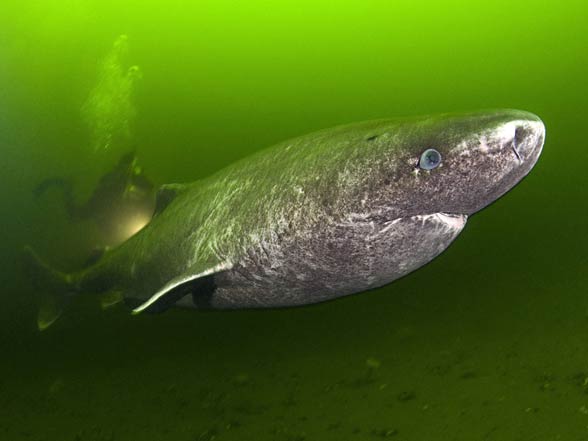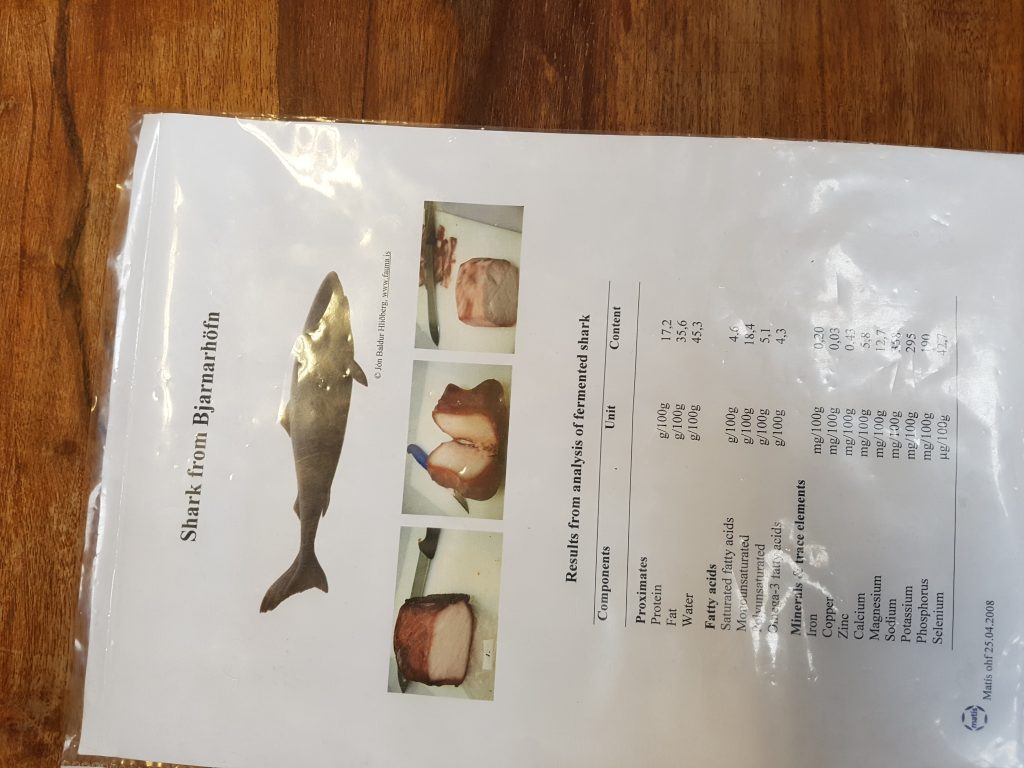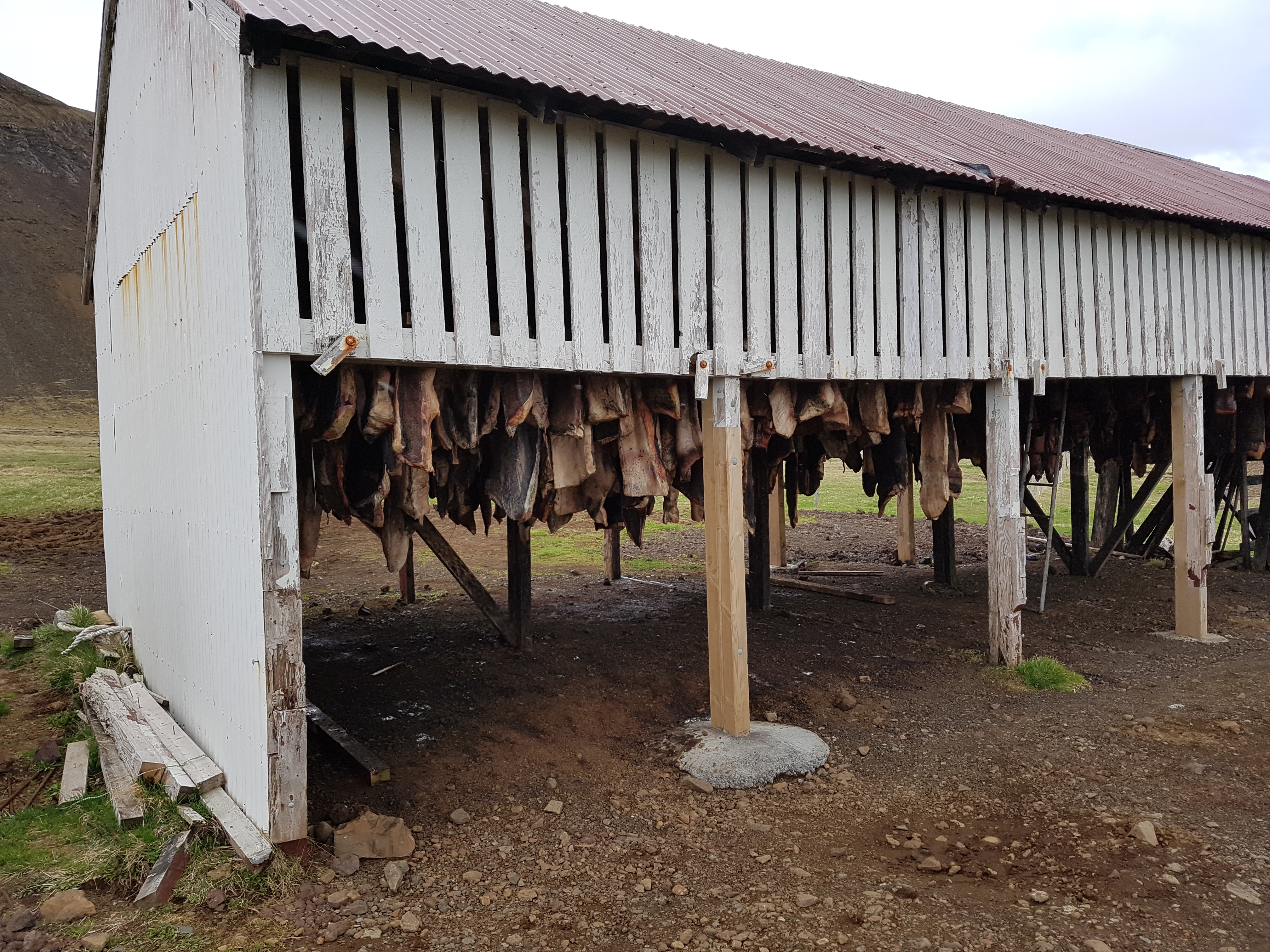*Cue Jaws Theme Song*
The elusive Greenland shark (Somniosus microcephalus) is a deep-sea occupant of the Atlantic Ocean. This bottom dwelling beauty (actually not the prettiest fish in the sea) has been a part of Inuit, Scandinavian, and Icelandic history and culture as far back as the 13th Century (1). What makes this particular sea creature so interesting is the lack of basic knowledge on anything about it despite research efforts. Preferring deep, arctic waters it is difficult to encounter these sharks outside of the fishing industry… or maybe they are experts at hide and seek?

Fishing for shark
Icelandic relationship with the Greenland shark probably began as early as settlement, but became the basis of a specific fishery for the sharks in the 18th century (2). These massive sharks can weigh up to 1023kg and were hunted specifically for the liver oil which was sold for lamp oil in Europe (1) a market that likely made the shark the most important marine export of Iceland at the time (2). At the peak of this fishery as much as 13,100 barrels of shark oil was exported to Europe (2) but the industry phased out with the decrease in demand for oil come the 20th century until exports completely halted in 1930 (1).

Shark for dinner anyone?
Although targeting Greenland sharks was to gain oil for export, Icelanders never let anything go to waste in their desolate landscape. Unfortunately, the shark meat is highly toxic, perhaps due to high concentrations of contaminants, or Trimethylamine-oxide becoming poisonous in the gut, or other unknown reasons (1), nevertheless its likely to kill you if eaten normally. But poison never stopped Icelanders! Through perhaps trial and error (sorry for the guys who tested the errors) they were able to create a method of fermentation that rid the meat of poison to make it edible. In short, the process began by cutting the shark meat into pieces and burying it close to the sea so salty water would flood over it for a few weeks and then it was dried for many weeks or months before being consumed (3). At a time where starvation in Iceland was a real threat, this shark meat was an important dietary supplement full of protein, energy, and nutrition, however today it is only eaten by older populations or on special occasions as a traditional food (3).

Visiting the Bjarnarhöfn Shark Museum in Snæfellsnes Peninsula

Eating shark meat is no longer necessary and there is definitely tastier food for Icelanders to consume so few to none are specifically hunted anymore. But in the true Icelandic way, no food goes to waste! The exploding market for tourism in Iceland gave way to new opportunities for the creators of the Bjarnarhöfn Shark Museum to utilize the Greenland shark bycatch that occurs in commercial fishing and prepare this obscure traditional dish for curious tourists to try. During our visit to the museum we were shown a movie about how the meat was processed in today’s society. (Check out this short video to see yourself https://www.youtube.com/watch?v=mbYqznD0R5M) . The museum had many artefacts of the Greenland shark such as teeth, skin, eyeballs with sticky parasites on them, and even pelts of seals that were found within the stomachs. Then came time for trying some of the smelliest food I’ve ever encountered, which was served as small white cubes with a bit of bread to help you swallow it down. I’m not one for seafood of any sort so I passed on the offer, however friends of mine exclaimed “It’s not as bad as smells”. After everyone got their fill of rotten (sorry ‘fermented’) shark we headed out back to check out the drying shack. We got told to not get too close as the poison dripping off the meat was not good to get on you, but to be honest I had no desire to step closer to that eye-watering smell.

A cause for concern?
Because of their mysterious lifestyle it makes it difficult to say whether Greenland shark populations are vulnerable or not. However due to bycatch statistics scientists can infer that these sharks are unlikely being threatened at this time (1). But it is always good to take the cautionary side of conservation and continue to keep track of the amount being caught through bycatch to see if they are being accidently killed at an unsustainable rate.
References Cited
- MacNeil, M. A., B. C. McMeans, N. E. Hussey, P. Vecsei, J. Svavarsson, K. M. Kovacs, C. Lydersen, M. A. Treble, G. B. Skomal, M. Ramsey, and A. T. Fisk. “Biology of the Greenland Shark Somniosus Microcephalus.” Journal of Fish Biology 80.5 (2012): 991-1018.
- “Greenland Shark.” Icelandic Fisheries. Ministry of Fisheries and Agriculture, n.d. <http://www.fisheries.is/main-species/cartilaginous-fishes/greenland-shark/>.
- Skära, Torstein, Lars Axelsson, Gudmundur Stefánsson, Bo Ekstrand, and Helge Hagen. “Fermented and Ripened Fish Products in the Northern European Countries.” Journal of Ethnic Foods 2.1 (2015): 18-24. <http://www.sciencedirect.com/science/article/pii/S2352618115000050?_rdoc=1&_fmt=high&_origin=gateway&_docanchor=&md5=b8429449ccfc9c30159a5f9aeaa92ffb>.